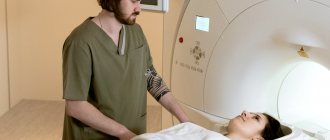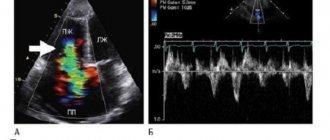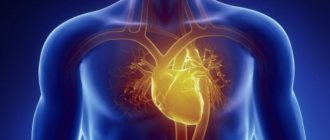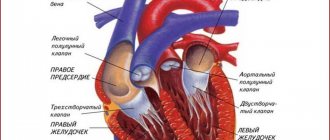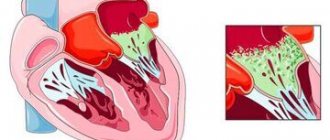Methods of treating the disease
With Goodpasture's syndrome, inflammation of the renal and pulmonary capillaries of immune origin develops, resulting in glomerulonephritis and hemorrhagic pneumonitis. The disease is named after the American pathophysiologist who first described it a little over a hundred years ago. This syndrome is diagnosed predominantly in men, with a frequency of approximately 1:1000000. Lack of timely treatment is associated with an extremely negative prognosis and mortality for the majority of patients.
The causes of the disease have not been precisely clarified, but it has been associated with viral pathologies, including influenza and hepatitis A, long-term use of certain medications, inhalation of gasoline and varnish vapors, and smoking. There is also a hereditary predisposition. The influence of negative factors stimulates the production of autoantibodies to the membranes of the alveoli of the lungs and renal glomeruli. Studies have shown that the development of an autoimmune inflammatory process is largely influenced by the activation of T lymphocytes, proteolytic enzymes and free radicals, and the synthesis of cytokines such as interleukin-1 and platelet-derived growth factor.
There are malignant, moderate and slow variants of the pathology. Clinical signs of the malignant variant include pulmonary hemorrhage and acute renal failure. Moderate and slow variants are manifested by characteristic symptoms of lung damage (cough, shortness of breath, hemoptysis), low-grade fever, weakness, weight loss, and symptoms of renal pathologies (hematuria, swelling of the extremities, increased blood pressure).
Treatment tactics depend on the type of Goodpasture syndrome, the severity of symptoms and the general condition of the patient.
In the acute form of the malignant variant, intensive therapy is carried out:
- artificial pulmonary ventilation (ALV);
- oxygen inhalation;
- blood transfusion;
- hemodialysis;
- replenishment of lost fluid and normalization of water and electrolyte balance.
Patients are also prescribed:
- pulse therapy with methylprednisolone - the patient is briefly administered certain types of glucocorticosteroids in increased doses, which helps reduce the production of autoimmune antibodies and the frequency of developing complications;
- combined pulse therapy - the administration of a combination of corticosteroid hormonal drugs and cytostatic drugs to the patient also has an immunosuppressive effect, after the laboratory and radiological tests return to normal, the patient is transferred to a maintenance regimen of therapy;
- monoclonal antibodies are an innovative method based on the ability of drugs to attach to the CD20 protein expressed on the surface membrane of B-lymphocytes and inhibit their activity, thus renewing the population of lymphocyte cells and stopping tissue destruction by autoimmune antibodies;
- plasmapheresis is a safe way to purify plasma from circulating immune complexes by centrifugation; blood taken from the patient is placed in a centrifuge, where the plasma is separated from the red blood cell mass, which, in combination with plasma replacement solutions, is injected back into the patient’s bloodstream.
Causes
The cause of Goodpasture syndrome is unknown. Therefore, measures to prevent it have not been developed.
Some factors have been identified that may be related to the occurrence of the disease:
- viral infections, such as influenza A2c;
- prolonged contact with gasoline and organic solvents;
- smoking;
- shock wave lithotripsy (“crushing stones”) in the ureter for urolithiasis;
- genetic characteristics - the presence of certain genes of the HLA system in a person.
How is the disease diagnosed?
In Israeli clinics, examination of a patient, differential diagnosis and development of treatment tactics takes about three days.
- Day 1
- Day 2
- Day 3
At the initial consultation, the attending physician conducts a thorough examination of the patient, paying attention to pale skin, swelling of the face and a number of other external signs characteristic of Goodpasture syndrome.
When auscultating the lungs, wheezing is heard, the number and severity of which increases in the presence of hemoptysis. At the appointment, the specialist draws up a list of necessary diagnostic procedures. Carrying out the examinations specified in the list of appointments:
- general and biochemical blood tests - the occurrence of the inflammatory process is indicated by an increased number of leukocytes, a high ESR, anemia, biochemical analysis shows an excessive content of urea and creatinine;
- immunological tests - the most revealing is the detection of antibodies specific to the glomerular basement membrane (anti-GBM) using enzyme-linked immunosorbent assay (ELISA) and radioimmunoassay (RIA);
- sputum examination;
- X-ray of the lungs;
- kidney and lung biopsy;
— spirometry (determining the volume of external respiration);
— Ultrasound of the kidneys;
— electrocardiography (ECG);
— Ultrasound of the heart (EchoCG).
The research results are reviewed by a commission consisting of the attending physician and highly specialized specialists. After studying the data obtained, a diagnosis is made and treatment tactics are developed.
Development of the disease
Goodpasture syndrome is an autoimmune disease caused by the formation of antibodies to the body's own cells. Antibodies formed to the glomerular basement membrane participate in its development. They are aimed at binding to a certain (fourth) type of collagen, and to one of the sections of its molecule - the non-collagen domain of the 3rd chain.
The structure of type IV collagen
There are different types of collagen. The 4th type is a network of connected spirals, each of which consists of 3 threads. It is a specific fragment of such a biopolymer that pathological autoantibodies are aimed at. This fragment is called Goodpasture antigen, and does not cause any pathological reactions in healthy people.
Goodpasture antigen is present in large quantities in the renal glomeruli, alveoli, as well as in the walls of the capillaries of the retina, cochlea of the inner ear, and choroid plexuses of the brain.
Antibodies bind to the Goodpasture antigen, which causes activation of the complement system - special immune proteins. A cascade protein reaction consistently unfolds, as a result of which inflammatory cells - leukocytes - are attracted to the site of contact of antibodies with antigens.
Leukocytes infiltrate the affected tissues and destroy them. In response to a complex immune response, there is ultimately an increase in the number of epithelial cells that are deposited on the basement membrane in the form of microscopic crescents. As a result, kidney function is significantly impaired, and they cannot fully eliminate toxic products. The same reaction in the pulmonary vessels leads to their damage and blood entering the cavity of the alveoli.
Advantages of treatment in Israel
- Highly qualified specialists with extensive experience in treating rare autoimmune diseases.
- Equipping medical centers with modern equipment.
- Accurate diagnostics using modern techniques.
- Inclusion of progressive methods and the latest medications into a comprehensive treatment program.
- Reasonable prices.
Timely completion of a treatment course can significantly improve the prognosis and eliminate painful symptoms. Don’t waste time, contact the clinic of your choice and start treatment immediately.
- 5
- 4
- 3
- 2
- 1
(0 votes, average: 5 out of 5)
Goodpasture's syndrome in children
Cases of Goodpasture syndrome in children are rarely reported. This disease is responsible for 0.4 - 1% of cases of severe renal failure in patients under 20 years of age. The average age of such patients is 17 years. The mortality rate from Goodpasture syndrome in children ranges from 0 to 3%, and their prognosis is better than in adults.
The incidence of girls and boys is approximately the same. But the disease does not only affect teenagers. The youngest known patient was 11 months old.
Only a few dozen cases of the disease are given in the literature. Goodpasture syndrome in children affects the kidneys and causes glomerulonephritis, which subsequently causes kidney failure. One of the early signs of the disease is the appearance of red blood cells in the urine. Therefore, it is important to regularly undergo preventive examinations and tests with your child. If you suspect kidney damage, you should be thoroughly examined by a nephrologist and, if necessary, agree to a biopsy of this organ.
Treatment is carried out in the same way as for adult patients.
Treatment
Treatment for Goodpasture syndrome includes the following:
- early administration of large doses of immunosuppressants and corticosteroids;
- plasmapheresis - for the purpose of immediate removal of antibodies circulating in the blood (this is a procedure during which a portion of blood is taken from the patient, from which plasma is removed, and then the blood cells are returned back to the vessels);
- hemodialysis, which purifies and filters blood outside the body;
- symptomatic therapy, which includes the administration of iron supplements and repeated blood transfusions.
Complications
If a patient is diagnosed with Goodpasture syndrome, currently all available treatment methods cannot provide a complete cure or prevent exacerbation:
- in many ways, the prognosis of the syndrome remains extremely unfavorable;
- development of acute renal failure;
- repeated pulmonary hemorrhages;
- death.
Prevention
In the entire history of the development of medicine, only a few cases of complete recovery have been identified. However, following certain rules can significantly reduce the risk of developing the disease:
- healthy lifestyle without smoking and drug use;
- lack of promiscuity;
- timely contacting a medical institution in the event of the development of infectious and other diseases;
- preserving the body from the influence of harmful chemical and physical influences of the environment.
Therapy methods
Timely and adequate treatment helps slow the progression of Goodpasture syndrome. The main goal of treatment methods is to ensure maximum removal of BMK autoantibodies. The complex of therapeutic actions for the above-described pathology may include the following:
- Glucocorticoids (Prednisolone at a dose of 100 mg per day orally in combination with cytostatics at a dose of 1000 mg per day intravenously for three days in a row, then the patient can be transferred to a tabulated form of the medication).
- Immunosuppressive cytostatics (Imupran, Azathioprine or Cyclophosphamide 150-200 mg per day in combination with Prednisolone).
- Plasmaphoresis (helps remove low molecular weight products of nitrogen metabolism and autoantibodies from the blood).
- Blood transfusion.
- Oxygen therapy.
- Antithrombic drugs (Curantil, Dipyridamole 150-400 mg per day for 3-8 months).
- Vasodilators (Corinfar 40 mg/day).
- Anti-inflammatory non-steroidal drugs (Metindol, Indomethacin 25-30 mg daily 2-3 times a day).
- For anemia, it is advisable to prescribe iron supplements (Totema, Aktiferrin, Tardiferon, Hemohelper, Ferlatum, Maltofer).
- Hemodialysis.
- Kidney transplantation (for end-stage renal failure).
Treatment must be carried out until kidney function is completely stabilized and BMK antibodies disappear. With such therapy, the dangerous symptoms of the disease quickly stop.
Surgery
Data on kidney transplantation in patients with pulmonary-renal syndrome are sparse.
Experts recommend carrying out this procedure no earlier than 6 months after the disappearance of BMK antibodies in the blood.
All patients with a transplanted organ must carefully monitor the concentration of creatine in the blood and the titer of BMK antibodies over time.
Even such treatment does not protect against relapse of glomerulonephritis. The cause of the disease is not in the kidney itself, but in metabolic disorders.
Note. Traditional medicine recipes for the treatment of the above-described anomaly are not effective. Do not engage in self-diagnosis and self-medication; it is better to entrust your life to experienced, highly qualified specialists.
Symptoms
Symptoms of Goodpasture syndrome include the following:
- the main symptom of the disease is a combination of symptoms of glomerulonephritis with hemoptysis (a sign of the collapse of lung tissue);
- peripheral edema appears (swelling of the face, abdomen, legs);
- anemia is noted;
- progressive chest pain, cough, shortness of breath;
- severe malaise, weakness, weight loss;
- an increase in body temperature is periodically observed;
- eye inflammation;
- decrease in urine volume;
- the appearance of blood in the urine;
- blood pressure rises from 140/90 mm Hg. Art. and higher.

